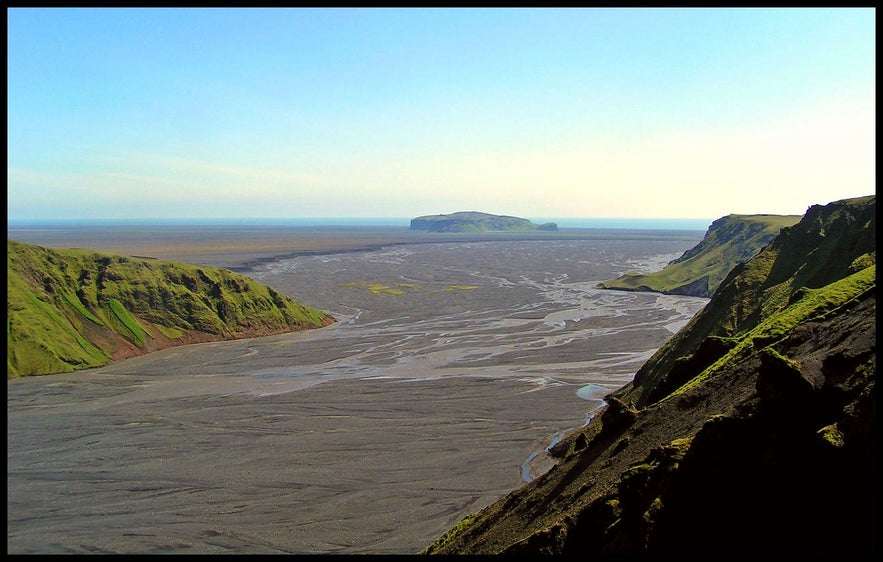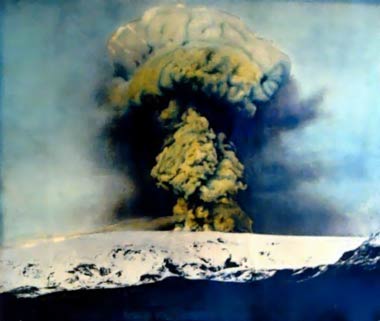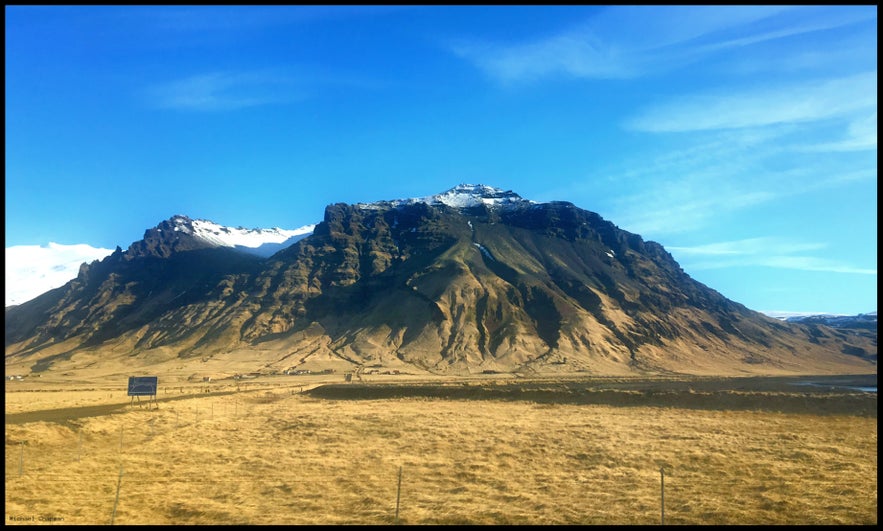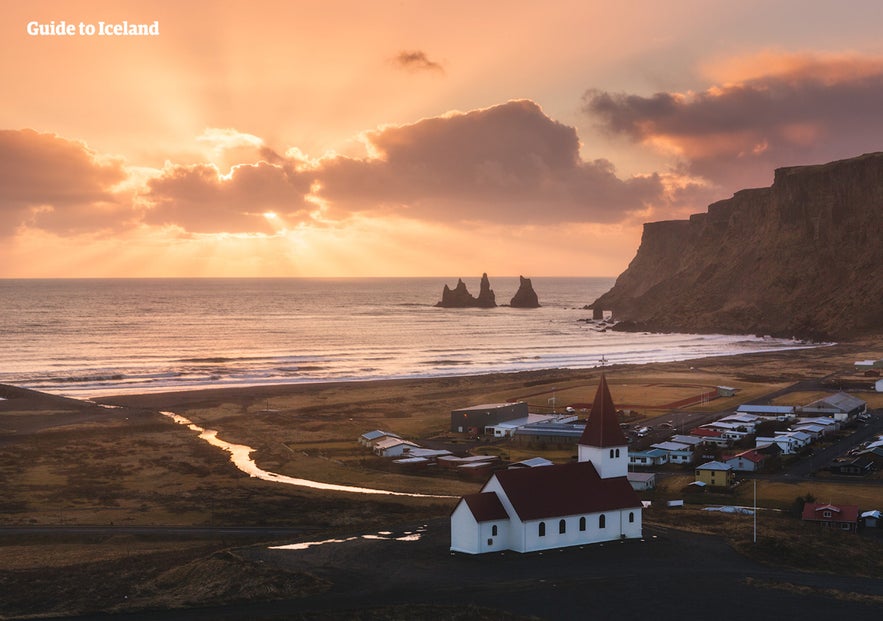
A Day's Ice Caving with Katla Track

With winter coming to an end, Guide To Iceland decided to spend some time with Katla Track, an adventure tour and sightseeing operator based in Vík í Mýrdal, to gain a closer look at their popular Fast Track Ice Caving tour, the only one of its kind available during the summer. Read on for more information.
Blinking into consciousness, I was, for a moment, confused to find myself lying in a bed that was not own, and even felt a slight jolt of the excitement at the thought that, perhaps, I’d had something of a lucky night.
As waking life took hold, it dawned on me slowly that I was at Midgard Base Camp, in the town of Hvolsvöllur very much alone, but spiritually satisfied. How so, I asked?
- See Also: Best Attractions By The Ring Road.
I stretched my dozy body, feeling the strain of the previous day's adventure. That loving ache down my inner-thigh had nothing to do with the rough bonking I'd fantasised but was instead the result of having straddled a snowmobile the afternoon before, something my muscles weren't particularly comfortable with (—quite like rough bonking, really...)
My group and I had spent the previous day discovering the magisterial Valley of Thorsmork, a region of sweeping glaciers, sky-high mountains and black, pitted canyons. Today, we would we be leaving Midgard Base Camp early, taking towards the coastal village of Vík í Mýrdal where, if all went to plan, we were to spend three hours with Katla Track exploring nearby ice caves, one of Iceland’s biggest visitor attractions.
- See Also: Top 9 Adventures in Iceland
Before leaving, we made sure to tuck into the breakfast buffet offered by Midgard, thanking for them for the incredible opportunity, and naturally, their croissants. To find out more about Guide To Iceland’s time in the Highlands, you can read my following take on the experience in Discovering Thorsmork with Midgard Base Camp.
Soon we were off, and as I am wont to do, took a little shut-eye at the driver’s expense. Not before experiencing a tasty gulp of the South Coast first, however, keeping my wavering eyes focused on the bizarre and breathtaking scenery that lies either side of Iceland’s Ring Road.
- See Also: The Top 5 Destinations in Iceland
Aside from the quaint, red-roofed farmsteads, historic turf houses and a seemingly endless supply of waterfalls, it was the glaciers, standing tall and domineering on the landscape, that struck me the hardest. Eyjafjallajökull, the South Coast’s poison chalice, painted a particularly stunning view that morning, taking on an ethereal, ochre shade in the springtime sun.
Musing gratefully on the fact that, as of yet, the volcano had shown little sign of stirring since 2010, I fell into a deep and predictable sleep, with visions of fire, ice and smokestacks playing out behind the darkness of my eyelids. When I awoke, we were pulling into Vík í Mýrdal (known colloquially as Vík), home to approximately three hundred Icelanders, known for their unique cultural heritage and social reserve.
The village itself is famous for its proximity to Reynisfjara black sand beach, one of the better examples of Iceland’s distinctive volcanic shorelines, as well as the basalt rock stacks of Reynisdrangar, the iconic imagery that one almost always associates with Vík.
The village is often utilised as a stop and designated meeting point for sightseeing tours along the South Coast, offering pleasant cafes, souvenir shopping and phenomenal surrounding scenery.
Parking up beside Víkurskáli restaurant, we were met with our guide from Katla Track, Davíð, and loaded ourselves merrily into the 4x4 Super Jeep. Katla Track has been operating from Vík í Mýrdal since 2009 with a focus on providing a range of recreational activities along the South Coast.
Because of their locality, this tour operator boasts an advantage running excursions in the area. For one, an experience of the area grants Katla Track’s guides some foresight when predicting, say, the behaviour of the region’s river, wind and tide. Visiting Iceland’s glaciers each day, they are also at the forefront of appreciating the transformative power of these enormous features, regularly discovering new caves, and closing down those that become risky to access.
Driving east along the Ring Road, it couldn’t have been more than fifteen minutes before Davíð was taking us off the tarmac, instead directing us down a beaten trail aligned with telephone poles. “This was the former Ring Road before 1992,” he informed us to the disbelief of our group, a fact that seemed staggering given the assumption such basic infrastructure had been completed in 1974, as is widely believed.
In the sticks, however, I suppose it is relatively easy to accept given the sheer scale of the project, the insurmountable amount of land to cover and the maintenance required for decades at a time. What I can say, without a measure of doubt, is the new Ring Road provides a far smoother ride than the tumble-driver journey made to the ice caves themselves.

By now, we were heading directly away from the ocean, entering the black and flat badlands of Katla outwash plains, just one stretch heading inland of Myrdalssandur’s 35 km (22 mi) coastline. This desolate and striking area is a result of numerous jökulhlaups (‘glacier floods’) throughout the year, the worst of which originated from the violent 1918 eruption of Katla volcano. Almost impossible to believe that this region was once utilised, and successfully at that, as farming land.
As the Super Jeep bumped and trundled itself down this lost and broken road, Davíð began to tell us the folklore behind the volcano’s name. In 1169, Þykkvabæjarklaustur monastery was established in Álftaver. At some point during its history, a woman, and hidden sorceress named Katla was employed at the monastery, alongside a young shepherd boy named Barði, Katla was known for her fierce temper and cruel personality, and it was the shepherd who often took the brunt of her outbursts.
- See Also: Folklore in Iceland and Vikings and Norse Gods in Iceland.
Unbeknownst to those around her, Katla was in possession of a pair of magical breeches, made for the flesh of humans, which granted her the power to run endlessly without tiring. One spring day, Katla told Barði that she would be heading away for a number of days. When she returned, Barði was to have all of the sheep rounded up, otherwise, there would be consequences. True to her word, Katla left the monastery, leaving the responsibility solely to Barði.

As to be expected, Barði had trouble herding his flock, spending four days fruitlessly searching the mountains' caves, caverns and canyons. At the end of the fourth day, he returned to the monastery to find Katla still not home.
Feeling desperate, he began to search for answers, finally stumbling upon Katla's magic breeches. Adorning himself in these mystical pants, Barði managed to successfully round up the flock and began to make his way home; as the fates would have it, however, Katla was already waiting for him.
Furious that he had stolen her magical items, Katla proceeded to drown Barði in a tub of acid that was routinely used for storing food. There, she kept the boy stored for a full year, appeasing the suspecting townsfolk with tales that Barði would return in the summer. All the while, members of the monastery continued to eat from the barrel, never suspecting the morbid contents inside.
- See Also: The Most Infamous Icelanders in History.
After a year, and the barrel near empty, Barði's skull was discovered bobbing inside, and Katla was summoned before the authorities. And yet, before justice could be done, the sorceress took off to the volcano that now bears her name and threw herself into the hot magma. Whenever Katla threatens to erupt, the minds of Icelanders jump to this tale, and the vengeance still to be brought forth by this dangerous spell-caster.
After continuing deeper into Myrdalssandur, the black sands turned to a luminous shade of green thanks to the overlying blanket of fresh moss, and the wide, open desolation becomes condensed as the mountains circle in. There was something fantastical about this place, as though it shouldn't exist... a captivating landscape that, somehow, managed to condense a great number of topographical features into the space of only a few square kilometres.
Looking around, I didn't need the guide to tell me that this was among one of the most popular shooting locations in Iceland, having borne sets such as HBO's 'Game of Thrones' and 'Star Wars: Rogue One'. Davíð also pointed out a number of mountains in the area that had been transformed with CGI technology, cementing the notion that Icelandic landscapes will continue to aspire artists long into the future.
We approached the glacier quickly, with Davíð pointing out their dark colouration, a consequence of the volcanic ash that comes to both become trapped in the ice, and to lay atop it. Davíð informed us that the glacier's changes appearance every day due to the battering elements, causing the ice to move, melt and sculpt itself forever in new directions.
We parked up a short distance away, listening and following instructions as Davíð taught us to apply crampons to about boots, as well as handed out helmets with headlamps attached. Before I knew it, we were stepping across a terrain of snow, frozen puddles and volcanic sands, making a swift approach to a wide and 20-metre high opening in the glacial wall.
- See Also: The Story of Icelandic Cinema.
Almost immediately, one can spot the elysian nature of Iceland's ice caves; glittering an unnameable blue, with a glass-blown interior that demonstrates perfectly the elegant way that water manages to sculpt its environment, these unique caves really do defy belief when visiting for the first time.

Standing at the cave's base, I transfixed hypnotically on the intricate natural patterns imprinted in the ice, the steady streaming droplets falling from the ceiling, the double rainbows shining at almost angle, and felt as though I'd readily stepped into the pages of fantasy, or science-fiction. It was a sight from a reality so foreign, yet stunning and sublime, I was again left speechless at just how incredible Iceland can be.
Davíð fastened a number of ropes to various hard-to-reach corners, making it a simple, if not physical affair climbing into different regions of the cave. One particular spot required some heavy shimmying against the ice, the tunnel finally opening up into a small, fully sheltered compartment in the glacier, complete with its own "window" into another area of the glacier. Davíð took to us two different caves over the two hours, each of which boasted a different experience entirely.
The first, a relatively shallow but high cave, sported an enormous circular sinkhole, allowing sunlight to pour in and illuminate the blue shades of this cavern. The second contained an ever-narrowing tunnel, venturing ever further beneath the glacier.
Standing on watch at all times, Davíð explained how oxygen becomes trapped in ice over hundreds of years, as well as pointing out enormous rifts in the cave itself, a reminder of how glaciers are very much active, shifting this way and that with enormous, yet gradual force. The ice of these caves, he told us, was approximately 600 years old, providing real insight into the longevity of what many consider to be one of the most evanescent states of matter.
When time was up, we exited the second cave to what must be, without doubt, one of the most incredible scenic sights available in Iceland, complete with a distant ocean, glacial slopes and towering, snow-capped peaks. Back at the super jeep, we returned our tour equipment, then spent a few moments appreciating our surroundings as the photographers caught the boundless landscape on drone footage.
With that, we departed Myrdalssandur and made our way back Vík í Mýrdal, the journey complimented as Davíð continued to educate us on the area’s history, geology and culture. At the car park, we said our goodbyes, bringing our weekend discovering the South Coast to a close.
Without a doubt, Katla Track comes highly recommended to those following in our footsteps; as far as providers go, you’ll be hard-pressed to find an outfit so experienced, professional and knowledgeable about the south.
Did you enjoy our blog Ice Caving with Katla Track? Have you visited the ice caves along Iceland's picturesque South Coast? If so, what time of year did you travel and would you recommend the experience to other visitors here? Make sure to leave your thoughts and queries in the Facebook's comments section below.
Altri blog interessanti
Islanda, il Paese delle Meraviglie
Ricordate tutti Alice nel paese delle Meraviglie, vero? Beh, ecco come mi piace definirmi. Una storia che mi rispecchia fin troppo, e non mi riferisco solo al nome. L’unica differenza? Il mio viaggioLeggi altro
Come e quando vedere l'aurora boreale? (ITALIANO)
Ciao a tutti! In questo blog vi parlo dell'aurora boreale, un bellissimo fenomeno che la natura ci offre! Prima di tutto, l'aurora boreale in Islanda non è visibile tutto l'anno, ma dalla metà agostoLeggi altroChasing Waterfalls in Iceland
Iceland is spectacular in so many ways and Icelandic nature is quite unique with its vast landscape, volcanic activity, geothermal areas, glacier lagoons and sceneries, black sand beaches and spectLeggi altro

Scarica il più grande mercato di viaggi in Islanda sul telefono per gestire l'intero viaggio da un unico posto
Scansiona questo codice QR con la fotocamera del telefono e premi il link che compare per avere sempre in tasca il più grande mercato di viaggi in Islanda. Inserisci il numero di telefono o l'indirizzo e-mail per ricevere un SMS o un'e-mail con il link per il download.


















